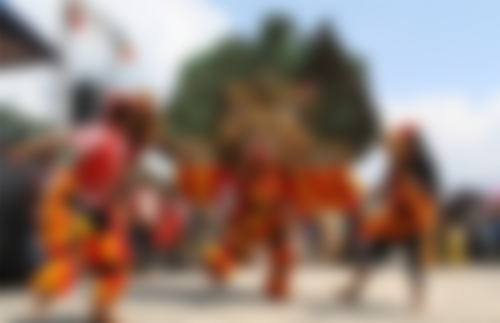Five Traditional Dances in Indonesia
Hello, my friend. It's been two weeks since I don't open and write this read.cash platform. You know, lately, I've been very busy at work. Incidentally, when yesterday was a holiday. So I can go visit my friend. Incidentally, my friend is a painter. He has received many painting orders.
While I was there, I saw a painting that was so beautiful. This type of abstract painting is full of colour patterns. But, after I looked at it more, the painting formed a visual art like a woman dancing. I think it's a very cool painting.
I like painting women dancing because I like to see dance moves. But it's a traditional dance. Not a modern dance accompanied by beat music. Traditional dance is an ancestral heritage that must be preserved. Because it is the value of the wealth of a nation's identity.
Indonesia is an archipelagic country consisting of many nations, tribes, religions, and races. In each region, there are traditional dances that show an ethnic identity. Therefore, I would like to introduce five types of traditional dances from Indonesia that might add insight and information to you about traditions in Indonesia.
1. Saman Dance

The Saman dance comes from the province of Aceh. This dance is well known in many countries. UNESCO has included the Saman dance in the list of cultural heritage that must be preserved so that in every cultural event held internationally, the Saman dance is always performed. This dance is performed by many people (groups). It takes teamwork to do this dance. In my opinion, the movement of the saman dance is quite difficult, so the saman dancers must be diligent in practising before performing.
2. Tor Tor dance

The Tor Tor dance originates from North Sumatra. Usually, in traditional Batak events, this dance is always performed. When dancing Tor Tor, it must be accompanied by music called Gondang Sembilan (Batak tribal drum). If you attend weddings, deaths, and harvest seasons in the Lake Toba area, you will see this Tor Tor dance. I think this dance is not difficult because the movements are very monotonous.
3. Piring Dance (Plate Dance)

This dance originates from West Sumatra and is performed by the Minangkabau tribe. The movements are very beautiful and also have many meanings. In the past, this dance was shown when the harvest season arrived. This dance is also a symbol of offering and gratitude to the Creator for being given a bountiful harvest. Currently, the plate dance is often shown during Minangkabau traditional weddings.
4. Reog Dance

This dance comes from the province of East Java, the Ponorogo district. This dance is already known in many countries. This dance was claimed by the Malaysian state because the Indonesian people had not preserved their own culture. In a history explained, this dance is a satire against the last king of Majapahit in the 18th century, because it was considered corrupt and was under Chinese influence. This dance is performed by several people who wear a lion mask with a peacock feather crown. The weight of the mask is estimated at 50kg.
5. Gambyong Dance

This dance comes from my hometown, namely Central Java province, to be precise in Solo. This dance has existed since the days of the ancient Javanese kingdom. At first, this dance was performed by the Javanese people when the harvest party was held. Then the royal party was interested in this dance and developed it with more beautiful movements. Along with its development, the Gambyong dance has been mixed with various cool choreography but still has a Javanese feel.
Those were five traditional dances from Indonesia. We must preserve such dances because they are the heritage of the cultured ancestors of the archipelago. Thank you for visiting to read. Hopefully, this information will add to your insight. Nice to meet you.





I love the traditional clothes they wear. Very beautiful and colorful.